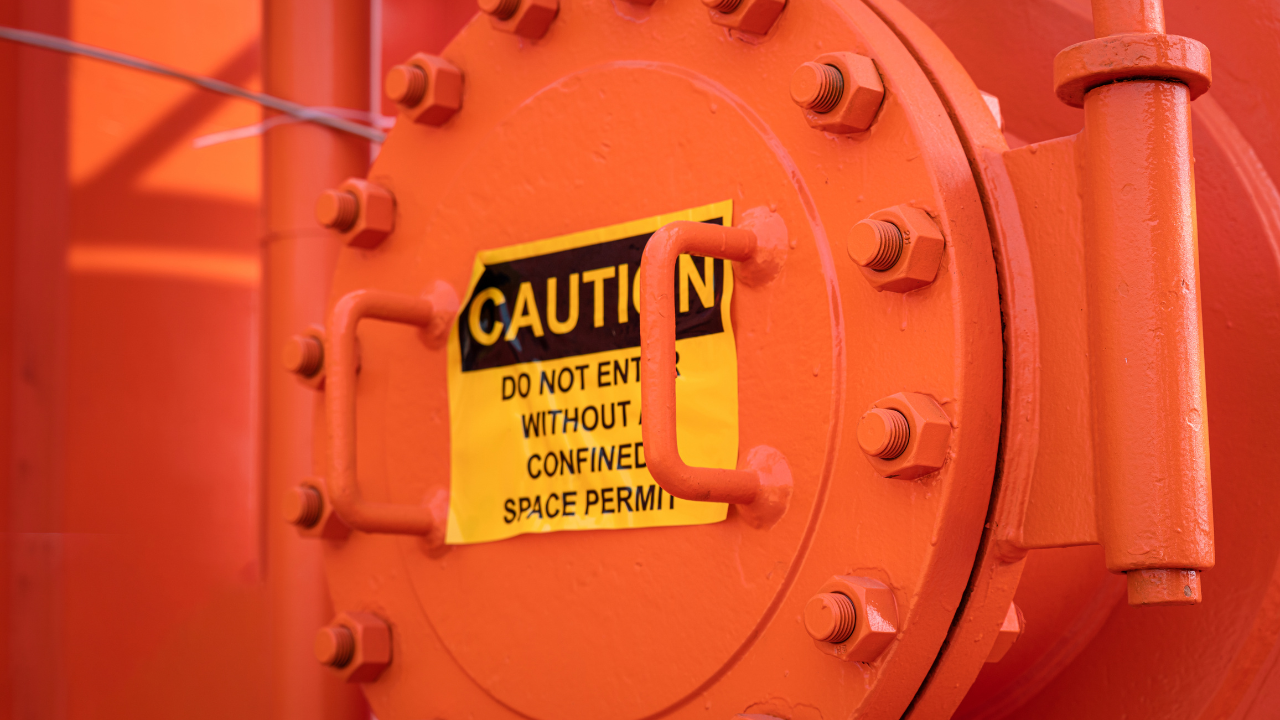Protective Clothing: The Hazard of Selection
Craig Woodward
A forklift operator in a manufacturing plant rounds a turn too quickly, catching a shelf corner and launching a portion of his load into an aisle stacked high with powdered caustic chemicals. The driver is unhurt, but clean-up efforts are halted when someone notices that the driver’s load of cleaning liquids is leaking into the spilled powder, producing a noxious, fuming compound. The warehouse is immediately evacuated, and the plant’s emergency response team prepares to assess the spill and tackle the clean up. But first, a decision must be made as to which protective suits to wear to ensure the health and safety of the emergency workers.
For emergency response professionals involved in handling hazardous materials, the above scenario is all too real. And the question of which protective suit to wear has become one of the most daunting of all personal protective equipment (PPE) issues. With literally thousands of dangerous materials being used/transported/discarded every day, the process of choosing protective clothing has become increasingly complex for today’s safety and hygiene professional.
There are more types of protective garments and fabrics than ever before, as technology increases the levels of protection and comfort offered by manufacturers. For the end-user, this can make PPE selection increasingly harder. All too often the technical data available from manufacturers confuses the selection process; it can be difficult to apply the information to a particular situation. Even experienced emergency management professionals – with the assistance of the excellent NFPA-1991, -1992 and -1993 standards for hazardous chemical response clothing – can find clothing selection a problem, as they are usually experts in chemical hazards, not PPE.
A solution to this problem would be a performance-based OSHA standard to help users sort out the confusing array of clothing products, something that 29CFR1910.132 falls far short of. This situation is being addressed by the Industrial Safety Equipment Association via a standards-writing initiative now underway. For now, however, protective clothing users have limited resources to help make the right calls.
Three Types of Protective Garments
It is important to understand the distinction between three broad types of protective garments used today. Generally classified as disposable, reusable, and limited-use garments, these three general categories provide a basic framework for clothing decisions.
Disposable garments are used for general industrial protection (not to be confused with uniform-type workwear), typically where the amount of protection required is relatively low and the hazards tend to be particles or light liquid splash. Common applications are paint spraying, asbestos remediation, and general maintenance, but they are also commonly used by emergency teams for low-level hazards. In recent years the technological improvements have been in the area of comfort and seaming. High-tech microporous fabrics are now available which offer improved barrier over traditional nonwoven polyethylene fabrics, plus they are more “breathable,” allowing moisture vapor to pass from the body of the wearer out through the garment. This has the benefit of increasing worker productivity and work time, while also reducing the potential for heat stress.
Disposable garments, when constructed using microporous fabrics and ultrasonic seam techniques (which eliminates stitch holes), are becoming especially critical in areas such as healthcare and EMS applications, pharmaceutical manufacturing, and other bio-hazard environments. Blood, viral and other bio-hazard protection can be achieved while allowing workers a higher level of comfort. Moving up the protection ladder, reusable and limited-use garments are used where true liquid and vapor chemical protection is required.
Traditional reusable fabrics such as PVC, Butyl rubber and Viton have been in the workplace for many years. The newer technology film-laminate materials – or so-called limited-use fabrics – are designed to provide the much broader range of chemical protection needed for hazmat work. Priced at a fraction of the cost of heavy reusable suits, limited-use garments are worn until they are contaminated and then discarded. The film-laminate materials have replaced the traditional elastomeric materials in the majority of applications worldwide, especially where there is significant risk of exposure to organic or toxic chemicals (such as emergency response or “live” industrial applications). As for reusable fabrics, there are certain applications where these heavier, more durable garments are ideal. For example, workers in the refinery industry must routinely deal with sulfuric acid and “HF” (hydrofluoric acid). Elastomerics provide good holdout against these chemicals, and the hazards can be safely cleaned off of the garments with proper decontamination procedures. That protection, combined with the reusables’ ability to withstand tough, abrasive work environments, means that elastomerics provide a good solution to such day-to-day hazardous assignments.
Starting with these three broad categories of protective apparel (disposable, limited-use and reusable), the end-user can begin to make an informed clothing decision – but just begin. Several other key factors must be considered for a detailed assessment. And users must be careful to apply the right evaluation tools to the task at hand, or risk making a decision based on irrelevant criteria. A good example of this is permeation holdout times against chemicals. One fabric may indeed have a substantially better permeation holdout performance than another, while chemical penetration resistance is the appropriate test to apply for the specific application.
What factors need to be considered?
In order to choose the optimum clothing, the selection process needs to be defined and simplified, based on two critical questions: What is the chemical challenge? What is the application or work scenario?
The chemical hazard is obviously important, but on its own tells little about the level of protection required. Chemical data against fabrics must be considered as the first level of decision-making, but the actual exposure scenario leads to a more detailed suit selection. For example, emergency response or a “live” application with significant liquid splash is going to require a much higher level of protection than handling the same chemical in sealed drums. This is why it is important to know as much about the specific application as possible, to ensure that workers are using adequate protection without being over-protected in terms of barrier, comfort and cost factors.
In terms of the actual use conditions or work environment, several questions must be answered to choose the appropriate style of garment: – What is the probability of chemical exposure (Zero, Low, Medium or High)? – What is the level or amount of chemical exposure (Residual, Light Splash, Heavy Splash, Deluge, Gas)? – What is the expected duration of the exposure (From a few minutes to an eight-hour shift)? – What parts of the body are likely to be exposed?
With accurate answers to these questions, a garment design can now be combined with a fabric selection and seam type based upon the chemical characteristics of the hazard itself. Thus, physical requirements plus chemical data equal all the information necessary to select an exact fabric and garment style for the particular application.
If this still sounds a little intimidating, don’t feel alone. With hundreds of suit choices and literally thousands of hazard scenarios, the decision can still get a little complicated. And with no performance-based OSHA guidelines to supplement the NFPA standards, even the most experienced safety and health professionals can have difficulty. PPE manufacturers are beginning to address this with computer solutions, offering programs that provide everything from basic fabric permeation data to complete suit recommendations. Kappler, for example, provides free software called Suit Smart(r) available as a CD or on-line, which allows the user to complete a quick checklist and receive a detailed suit recommendation for the specific application. Such tools are not designed to replace the experienced decision of a safety professional, but they do provide a quick reference and help sort out the options.
As protective technology has improved, along with increased knowledge of just how dangerous many commonly used chemicals can be, today’s protective clothing wearer is faced with a complex array of choices. The information to make the proper decision is available, with the challenge being to organize and access the data in an efficient manner. Quite simply, it is critical that protective clothing users become ever more educated about the choices for proper protection. Without such education, the clothing decision itself can indeed become a job hazard.
Sidebar, by Todd R. Carroll
An activity of keen interest to many protective clothing users is the revision and update of the Chlorine Institute’s Pamphlet #65-Personal Protective Equipment for Chloro-Alkali Chemicals. The existing edition of the standard (i.e., November 1995 Edition 3) is being revamped to include updated recommendations on chlorine and sodium hydroxide, and expanded to include PPE recommendations for handling potassium hydroxide, sodium hypochlorite, hydrochloric acid, sulfuric acid, and anhydrous hydrogen chloride gas. With an expected publication date of May 2001, Pamphlet #65 will include easy to read tables detailing PPE recommendations for various routine chemical handling operations such as line breaking, sampling, loading and unloading, and emergency response.
On the national and international fronts, standards are being developed to harmonize the testing, labeling and certification of chemical protective clothing. A draft standard is in the works within the Industrial Safety Equipment Association (ISEA). The ISEA working group, Safety Wearing and Apparel (SWAG), is near completion of a comprehensive performance based standard (ANSI/ISEA 103) designed to aid users in complying with OSHA’s requirement for a document hazard assessment and the selection/specification of “appropriate” chemical protection clothing under 29CFR1910.132. A concurrent effort is under way within the International Standards Organization (ISO). The ISO committee on protective clothing is currently balloting an international version of the ANSI/ISEA 103 draft as ISO/CD 16602, which has an expected approval in the first or second quarter of 2001.
What else is on the horizon for protective clothing users in the new millennium? Plenty. For emergency responders, significant changes have recently been made to the National Fire Protection Associations NFPA 1991, 1992, and 1993 standards. The most significant change is the elimination of NFPA 1993 on support function garments and the February 2000 release of a drastically revised NFPA 1992 for liquid-splash protective clothing. The new NFPA 1992 standard allows for optional flame resistance certification, which essentially removes the previous requirement for dual suits (i.e., aluminized overcover on top of a limited-use film based suit to meet performance requirements.) One final activity of interest is the development of a new standard (i.e., NFPA 1994) to address the unique needs of the domestic preparedness program and protective clothing used during situations of urban terrorism. NFPA 1994 will establish performance criteria for individuals responding to scenarios that might include industrial chemicals (i.e., chlorine and ammonia), military chemical agents (i.e., mustard gas and sarin), and biological agents (i.e., anthrax biological pathogens). Three levels of performance are being proposed to address the needs of entry personnel, fire/police support, EMS, etc. This standard should be available in February 2001.
Craig Woodward
Related Articles

All About Eye Protection

Arc Flash/Arc Blast Review with Safety Suggestions for Design & Maintenance

CSA Launches First Confined Spaces Standard in Canada

Do You Need NFPA 70E?

Electrical Hazards

Eye Injuries are a Serious Threat to American Workers




